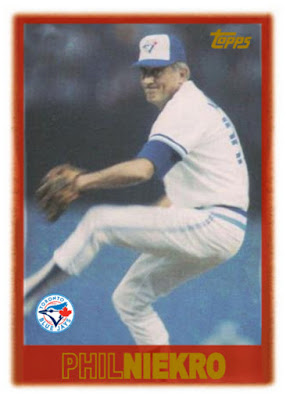In 1960 the AFL was born. Both United Press International and The Sporting News added Rookie of the Year awards for the fledgling league. And oddly, both were in agreement on the recipients for several years in a row.
In 1960 the AFL Rookie of the year was
Abner Haynes of the Texans. In 1960 Fleer was the official card of the AFL. Since technically
all of the players in the AFL were rookies it is not surprising that Haynes was included in the set. Topps was still producing NFL cards in 1960 but that league's top rookie,
Gail Cogdill was not included in the Topps set. I had originally made a post for Cogdill
here.
In 1961 once again, Topps made cards for the NFL while Fleer covered the AFL. This time, however, neither sets included the respective ROYs. The top AFL rookie was
Earl Faison who played defensive end for the Chargers. I originally posted this Card That Never Was
here.
This was the Chargers first season since moving to San Diego. The franchise originally played as the Los Angeles Chargers. The Chargers are looking like they will return to L.A. in the 2017 season unless a referendum to keep them in San Diego is passed.

In the NFL the Rookie of the Year was "Da Coach"
Mike Ditka. Remembered primarily for his coaching, Ditka revolutionized the position of tight end. I made this card after I found a picture of him wearing the unfamiliar number 82. Ditka had worn 89 in college at Pitt and throughout his NFL career (except his first year on the Eagle when he wore 98). He was initially given #82 because 89 was worn by kicker
John Aveni. But in June of 1961 Aveni was dealt to the New York Giant and Ditka regained his number 89.
Click here to see the original post.
The AFL rookie of the year was another Dallas Texan,
Curtis McClinton. The was not a card in the Fleer set so I made two different cards of him. I came across a terrific painting of McClinton and emailed the artist for permission to use it. In the meantime I colorized a b/w photo of McClinton and made another card. The artist got back to me and granted use of the painting but suggested that I keep the watermark because McClinton himself was the owner of the original painting. So I decided to post both cards.
Click here to see the original post.

The 1962 Topps set actually include the NFL ROY,
Ronnie Bull. One of the best looking sets, 1962 Topps included a black and white inset action shot. Although Bull's card has him on the Bears, he is shown wearing his Baylor jersey and the inset action shot is from the annual Chicago College All Star game played at Soldier Field.
In 1963 once again neither set included the Rookies of the Year. So I created a 1963 Fleer Card That Never Was for the AFL ROY,
Billy Joe of the Denver Broncos,
here. I also made a 1963 Topps Card That Never Was of Vikings receiver
Paul Flatley,
here.
In 1964 there was a new player in the Rookie of the Year Game. Now not only were awards given out by The Sporting News and United Press International but the Newspaper Enterprise Association (NEA) also presented a Rookie of the Year award to the top NFL rookie.
The other development in 1964 was that the NFL cards were now produced by Philadelphia and Topps took over producing cards for the AFL. In the AFL, Jets rookie fullback,
Matt Snell rushed for 948 yards and 5 TDs. He was the top choice for both UPI and TSN. Meanwhile in the NFL all three organizations chose future Hall of Famer
Charley Taylor. Taylor had 1569 all purpose yards and 10 TDs in his rookie year with the Redskins.
Click here to see tho original post.
In 1965 once again there was agreement among the picks. Both UPI and TSN agreed that "Broadway"
Joe Namath was the AFL Rookie of the Year. In the NFL, UPI, TSN and NEA unanimously awarded the "Kansas Comet"
Gale Sayers the Rookie of the Year. Topps of course included this iconic card of Namath in their 1965 set. Gale Sayers, however, would not get a card in the Philadelphia set until 1966. So I created this 1965 Philadelphia Card That Never Was of Sayers. You can see the original post
here.
Ok, now that we're all caught up, I need to warn you, thing get muddier in 1966. Stay tuned....


















































